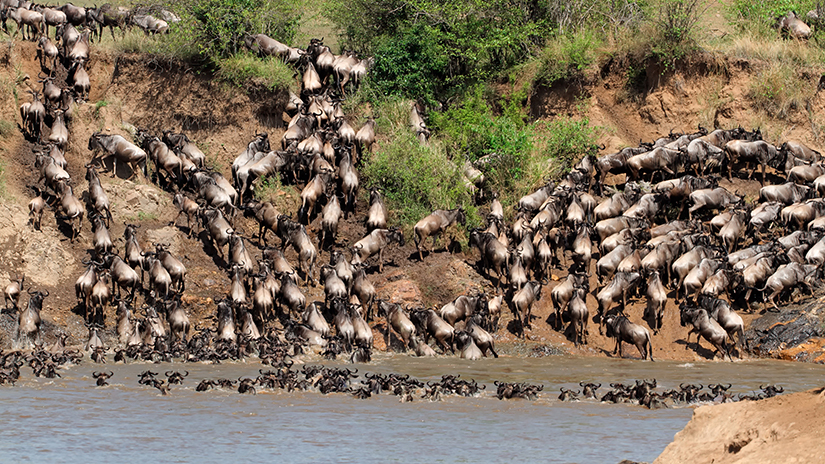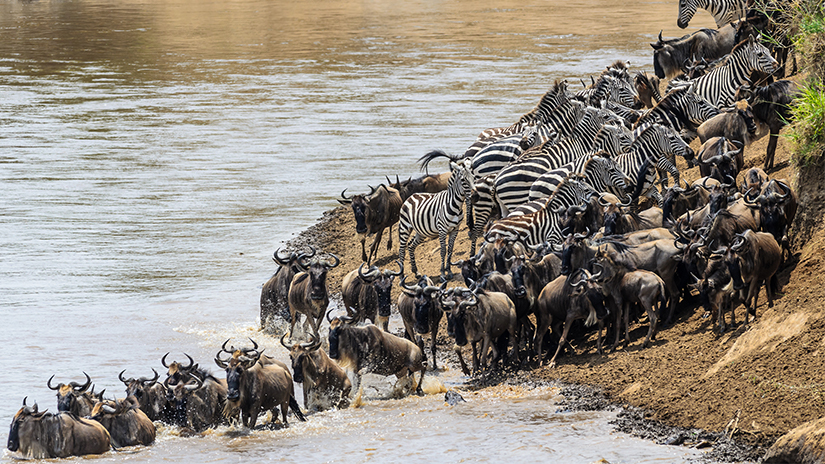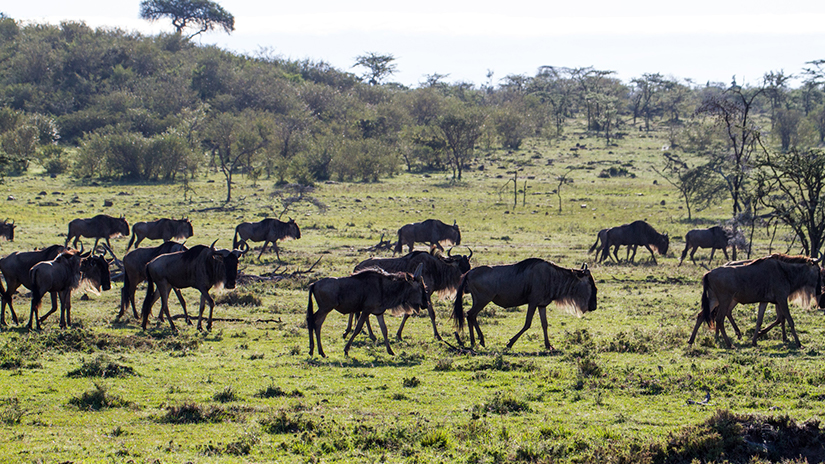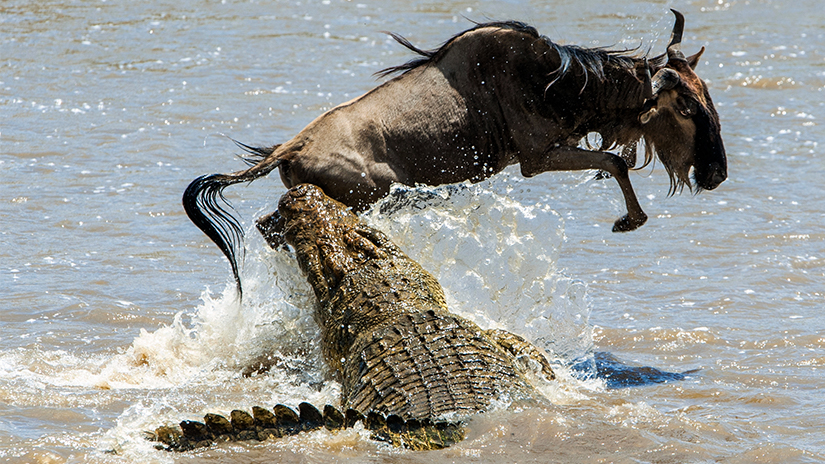 Your top 5 Great Migration safari questions answered East Africa’s Great Migration has earned many titles over the years. The “world’s greatest wildlife spectacle”, the “greatest show on earth” and the “largest movement of animals on the planet” are just a few. But what is this natural phenomenon, why has it earned a place on thousands of bucket lists and how can travellers experience it at its best? We answer your top questions below.
1. What is the Great Migration? In short, the Great Migration is the single largest mass movement of land mammals in the world. Every year, more than 1.5 million wildebeest, along with some 300,000 zebras and gazelles, make their way across the plains of East Africa in search of water and fresh grazing. Along the way, thousands of carnivores—lions, cheetahs, crocodiles and more—lay in wait for a chance at their next meal. This arduous journey covers well over 2,500 kilometers. Some 200,000 animals never make the full round, succumbing to exhaustion, starvation or predators.
2. Why should I see the Great Migration? To see the Great Migration is to embark on a safari of the most epic proportions. Watching thousands of wildebeest teeming over the plains, crushing across a river or stampeding away from ruthless predators is a breathtaking experience unlike anything else on Earth. And imagine, all of this from the up-close view of your game vehicle! It’s no wonder this safari is on the bucket list of most globetrotters. What’s more, the Great Migration makes its way through some of the most breathtaking ecosystems in East Africa, full of game life such as elephants, rhinos, giraffes, leopards, hyenas and more, including one of the continent’s most famous national parks, the Serengeti.
3. Where do I see the Great Migration? The Great Migration moves in a circular route through Tanzania’s famous Serengeti and Kenya’s Masai Mara national parks. However, it is not enough just to visit these places. Though the route of the migration varies slightly every year, its patterns are trackable, and one needs to be in the right place at the right time for optimum game-viewing. Decades of experience running tours in this region has let us pinpoint the best places at each time of year to be in the thick of the action. These locations are featured in our specially curated Great Migration Safari series. You can find more information about where to be at each time of year in the next question.
4. When is the best time of year to see the Great Migration Different months of the year offer different highlights and it is up to the individual traveler to pick which ones they are most excited to see. During January, February and March, the wildebeest have arrived on the short-grass plains of the southern Serengeti. In this region, wildebeest are everywhere you turn, providing an overwhelming insight to how big these herds really are. February is calving season, and some 300,000 to 400,000 calves are born within two to three weeks of each other. The sea of grass provides little cover and these young are easy prey for carnivores. Calves can run within minutes of being born, providing an incredible spectacle of life. By April, as nutritious grass in the region gets eaten up, the herds embark on their northern exodus to greener pastures. They make their way through the western Serengeti in May, and by June and July, the masses are prepared for another dramatic natural display—river crossings. Two major rivers, the Grumeti and the Mara, lie in the path of the migration, and watching the herds cross these water bodies is an incredibly exciting experience. First, herds start to gather at the riverside, fearful of crossing the crocodile-infested waters that could spell the end of their journey. Then, with no visible trigger, the first wildebeest will take a leap of faith into the river below, and the dam is broken. Hundreds of wildebeest immediately swarm across the river in a confusing crush of bodies, desperate to make it to the other shore. Though most will make it across, many will fall prey to the patient and hungry crocodiles these rivers are known for. By October, most of the masses have made their way to the northern Serengeti and Kenya’s famous Masai Mara, greeted by hungry lions waiting to chase down their prey in a heart stopping display of natural selection. The wildebeest graze through the grasslands of the Mara into November until the arrival of the rains drive them to the northern Serengeti once more, completing their circular route.
5. What else should I know about seeing the Great Migration? As with any other natural phenomenon, seeing the Great Migration in its full glory is really a matter of being in the right place at the right time. What’s more, knowing where to be for optimum game viewing is a culmination of decades of on-the-ground experience. Whether you want to view wildebeest calves taking their first steps in the Serengeti, frantic river crossings of the Grumeti, or legendary lion hunts on the northern plains, our curated collection of Great Migration Safaris is an amazing option for chasing after jaw dropping photos and intimate views of this natural spectacle at its best. Explore our selection of Tanzania Migration Safaris
|
|






 Posted by Kierra Jones
Posted by Kierra Jones